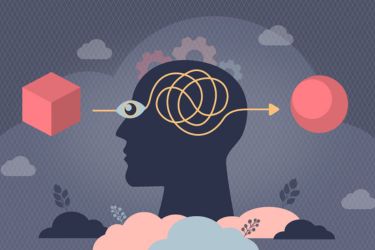Consumer neuroscience and neuromarketing are changing the way we understand what drives our buying decisions. By combining insights from psychology, biology, and marketing, we can better grasp the emotional and cognitive processes behind consumer behaviour. This field explores how our brains respond to different marketing stimuli, revealing hidden influences that affect our choices.

As we delve into this fascinating intersection, we will uncover the technological advances that have made studying the consumer's mind more accessible than ever. These innovations not only enhance how brands connect with their audience but also spark important discussions around ethical considerations in this emerging landscape. Our exploration of these elements can lead to more informed marketing strategies that align with the needs and wants of consumers.
Understanding how neuroscience applies to marketing opens up new avenues for creating effective campaigns. We will examine how this knowledge can shape our approach to consumer engagement and inform future practices in the industry.
Key Takeaways
- Neuromarketing merges insights from neuroscience with marketing strategies.
- Technology has enhanced our understanding of consumer behaviour.
- Ethical considerations are crucial as we advance in this field.
The Intersection of Neuroscience and Marketing

In this section, we will explore how neuroscience plays a vital role in understanding consumer behaviour and marketing strategies. By studying the brain's responses to marketing stimuli, we can gather valuable insights that enhance our strategies and improve consumer engagement.
Foundations of Consumer Neuroscience
Consumer neuroscience is built on the study of how the brain processes information related to buying decisions. It combines principles from neuroscience with marketing research to uncover why consumers choose certain products over others.
We use various tools, such as functional magnetic resonance imaging (fMRI) and electroencephalography (EEG) to measure brain activity. These tools help us understand emotional responses, attention levels, and decision-making processes.
For instance, we may observe that specific advertisements trigger positive emotional responses in the brain. This information allows marketers to tailor campaigns that resonate better with consumers. By focusing on mechanisms like attention and memory, we can enhance brand loyalty and overall effectiveness.
Evolution of Neuromarketing
Neuromarketing emerged as a response to the need for deeper insights into consumer behaviour. It evolved from traditional marketing techniques that primarily relied on surveys and focus groups.
As we began to recognise the limitations of self-reported data, neuromarketing offered a way to access unfiltered consumer reactions. This field utilises advanced methodologies to analyse how advertisements affect consumers on a subconscious level.
For example, studies have shown that certain colours or sounds can impact a consumer's likelihood of making a purchase. Understanding these elements allows us to create sophisticated marketing strategies. Neuromarketing continues to evolve, integrating developments in technology and psychology to better understand consumer preferences and behaviours.
Understanding the Consumer's Mind

To effectively influence consumer behaviour, we need to explore the underlying cognitive processes and emotional responses that shape how decisions are made. These factors play a critical role in how consumers perceive brands and their offerings.
Cognitive Processes in Decision Making
Cognitive processes involve the mental activities that guide our choices. When consumers face a decision, they actively engage in information processing, evaluation of alternatives, and ultimately, selection.
We can identify several stages in this process:
- Problem Recognition: Consumers realise they have a need or desire.
- Information Search: They seek out information to address that need.
- Evaluation of Alternatives: Consumers compare different options based on attributes like price, quality, and brand reputation.
- Purchase Decision: After evaluating options, a choice is made.
Our understanding of these stages helps us design marketing strategies that align with consumer thought patterns, making it easier for them to choose our products.
Emotional Responses and Brand Perception
Emotional responses significantly impact how we perceive brands. Positive feelings towards a brand can enhance loyalty, while negative feelings can drive us away.
Key emotions that influence brand perception include:
- Trust: Builds a sense of security in our choices.
- Happiness: Can be linked to effective marketing campaigns that resonate with our desires.
- Fear: Often used in advertising to create urgency or motivate action.
By understanding these emotional triggers, we can craft messages that connect with consumers on a deeper level. This connection can lead to a more favourable perception of our brand in their minds.
Through studying psychology and consumer behaviour, we gain valuable insights into these complex interactions, allowing us to create more effective marketing strategies.
Technological Advances in Neuromarketing

Technological advancements play a crucial role in neuromarketing, enhancing our understanding of consumer behaviour. By leveraging various scientific methods, we can gather insights into how customers think and feel about products. This section explores two key approaches: neuroimaging techniques and biometric measures.
Neuroimaging Techniques
One of the most significant advancements in neuromarketing is the use of neuroimaging techniques such as fMRI (functional Magnetic Resonance Imaging) and EEG (Electroencephalography).
-
fMRI allows us to observe brain activity in real-time by measuring changes in blood flow. This technique helps us identify which areas of the brain respond to specific marketing stimuli.
-
EEG provides a more direct measurement of electrical activity in the brain. It has the advantage of being portable and more cost-effective than fMRI.
Both methods offer valuable insights into consumer emotions and attention, helping us create more effective marketing strategies.
Biometric Measures
In addition to neuroimaging, biometric measures have transformed how we assess consumer reactions. This includes techniques like eye tracking and galvanic skin response (GSR).
-
Eye tracking enables us to see where a person looks, helping us determine what captures their attention. This information is crucial for optimising product placement and advertisement design.
-
GSR measures the electrical conductance of the skin, which varies with emotional arousal. This can indicate how strongly a consumer is engaged with a brand or product.
These biometric tools provide us with quantitative data that complements our qualitative insights from neuroimaging. Together, they enhance our ability to craft targeted marketing campaigns.
Analysing Consumer Behaviour

Understanding how consumers think and act is crucial for effective marketing. We can break down this analysis into two main areas: how we assess attention and motivation, and how memory plays a role in brand recall. Focusing on these elements helps us uncover the drivers behind consumer choices.
Assessing Attention and Motivation
Attention is the first step in engaging consumers. We must capture their focus to ensure they notice our products. Various strategies exist to enhance attention, such as using bright colours, catchy slogans, or engaging advertisements.
Motivation drives consumers to act. It is essential to understand their needs and desires. We can use techniques like emotional appeals or highlighting benefits to tap into these motivations. By doing so, we increase the chances of influencing purchasing decisions.
Memory and Brand Recall
Memory significantly influences consumer behaviour. When we present information in a memorable way, consumers are more likely to recall our brand later. Repetition and familiarity play key roles in aiding memory.
Using catchy jingles, logos, and consistent messaging strengthens brand recall. We can also leverage storytelling to make our brands more relatable. This helps consumers connect with us on a personal level, making them more likely to choose our products over competitors.
Marketing Strategies Informed by Neuroscience
Neuroscience offers valuable insights that can shape our marketing strategies. By understanding how consumers think and make decisions, we can enhance product development and design more effective marketing techniques.
Product Development and Innovation
We can use insights from neuroscience to improve product development. By examining how consumers respond to different stimuli, we can identify features that attract attention and drive engagement.
Key factors include:
- Emotional Appeal: Products that evoke a strong emotional response often resonate better with consumers.
- Design Elements: Visual aspects, like colour and shape, can influence buying decisions.
Research shows that using neuroscience tools, such as eye-tracking and brain imaging, helps us innovate effectively. This data aids our creativity, allowing us to create products that better meet consumer desires.
Targeted Marketing Techniques
Targeted marketing techniques benefit greatly from neuroscience. By understanding how the brain processes information, we can craft messages that are more likely to connect with our audience.
Important aspects are:
- Personalisation: Customised messages often lead to higher engagement. People prefer content that feels tailored to them.
- Behavioural Triggers: Knowing which triggers motivate purchases allows us to design campaigns that drive action.
Neuromarketing can guide our choice of media and messaging to ensure we reach consumers effectively. By focusing on what resonates, we increase the chances of successful campaigns.
Ethical Considerations in Neuromarketing
As we explore the field of neuromarketing, it is essential to address the ethical implications this discipline presents. Key areas of concern include consumer privacy and consent, as well as the responsible use of neurodata. Understanding these issues helps us navigate the complexities of marketing in a manner that respects individual rights and societal norms.
Consumer Privacy and Consent
Consumer privacy is a fundamental ethical concern in neuromarketing. We collect sensitive data that can reveal not only preferences but also subconscious thoughts and feelings.
To mitigate privacy issues, we should ensure that consumers understand how their data will be used. This includes obtaining clear and informed consent before any data collection occurs.
Here are some key considerations:
- Transparency: We must clearly explain our methods and purposes for data use.
- User Awareness: Consumers should be informed about how their data might influence marketing strategies.
- Opt-out Options: Providing choices for consumers to opt out enhances trust and respect for individual privacy.
Responsible Use of Neurodata
The use of neurodata raises important ethical questions about manipulation and consumer autonomy. As consumer neuroscientists, we must use data responsibly to avoid exploiting psychological vulnerabilities.
Practices we should adopt include:
- Data Anonymisation: Protecting identities while using neurodata ensures consumer confidentiality.
- Limitations on Use: We should define clear boundaries for how neurodata is employed in marketing strategies.
- Ethical Oversight: Establishing a review process for neuromarketing campaigns can promote responsible practices.
By prioritising these ethical considerations, we build a more trustworthy relationship with consumers and contribute positively to the growing fields of neuroeconomics and consumer neuroscience.
The Future of Neuromarketing
As we look towards the future of neuromarketing, we recognise the pivotal roles of predictive analytics, artificial intelligence, and big data. These elements are set to transform how brands understand and engage with consumers.
Predictive Analytics and AI
Predictive analytics combined with artificial intelligence will reshape neuromarketing strategies. By analysing consumer behaviour patterns, we can forecast future buying decisions and preferences.
Tools powered by AI will process vast amounts of data instantly, enabling us to create personalised marketing campaigns. This means ads can be tailored to fit individual needs and preferences.
Moreover, machine learning algorithms will refine through experience. They will improve targeting efforts over time, ensuring that our marketing practices evolve in line with consumer expectations.
The Role of Big Data
Big data is at the core of future neuromarketing strategies. With data being generated at an unprecedented rate, it offers us insights into consumer behaviour that were previously unattainable.
We can gather and analyse information from various sources, such as social media, shopping habits, and even biometric data. This multi-dimensional approach allows us to gain a deeper understanding of their desires and motivations.
Incorporating big data into neuromarketing efforts means we can segment audiences more accurately. This increased granularity leads to more effective campaigns and improved ROI, as we can reach the right consumers at the right time with messages that resonate.
Frequently Asked Questions
In this section, we address common queries regarding consumer neuroscience and neuromarketing. Each question aims to clarify the distinctions, benefits, pioneers, educational resources, and ethical considerations within this evolving field.
What distinguishing features separate consumer neuroscience from traditional marketing?
Consumer neuroscience focuses on how the brain responds to marketing stimuli. Traditional marketing often relies on surveys and demographic data. We use brain imaging and other scientific methods to gain deeper insights into decision-making processes. This approach allows us to understand the subconscious influences that affect consumer choices.
In what ways can neuromarketing techniques enhance understanding of consumer behaviour?
Neuromarketing techniques, such as functional MRI and EEG, help us observe brain activity in real-time. These tools reveal how consumers emotionally respond to brands and advertisements. By analysing these responses, we can tailor marketing strategies more effectively to meet consumer desires and needs.
Who is credited with pioneering the field of neuromarketing, and what were their principal contributions?
Antonio Damasio is often credited as a pioneer in consumer neuroscience. His work on the role of emotions in decision-making laid the groundwork for understanding how emotional responses guide consumer behaviour. Other contributors include Read Montague, who applied neuroscience to study choice and preference in consumer settings.
Which three principal fields of study contribute to the practices of neuromarketing?
The three main fields are psychology, neuroscience, and marketing. Psychology helps us understand consumer motivations and behaviours. Neuroscience provides insights into how the brain processes information. Marketing applies these insights to create effective promotional strategies.
How can one access educational resources to learn more about consumer neuroscience and neuromarketing?
We can find courses on platforms like Coursera that offer detailed insights into consumer neuroscience and neuromarketing principles. Additionally, universities increasingly provide specialised degrees in this field. Websites like Bitbrain also answer frequently asked questions about courses and training options available.
What are the ethical considerations associated with using neuromarketing in consumer research?
Ethical considerations in neuromarketing revolve around consent and privacy. We must ensure that participants are aware of how their data will be used. Additionally, it's crucial to avoid manipulation of consumer choices. Striking a balance between effective marketing and ethical responsibility is essential in our practices.





















